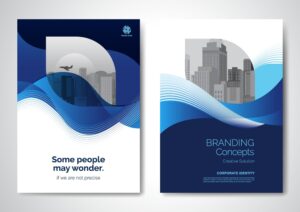Interactive Website Design: Transforming User Engagement
The Importance of Interactive Website Design
In the digital age, where online presence is crucial for businesses, interactive website design stands out as a key element in engaging users and enhancing their overall experience. Unlike static websites, interactive designs encourage user participation, making the experience more dynamic and engaging. This not only keeps visitors on your site longer but also increases the chances of conversion, whether it’s making a purchase, signing up for a newsletter, or reaching out for more information.
Key Elements of Interactive Website Design
- User-Centered Design (UCD)
At the heart of interactive website design is User-Centered Design (UCD). This approach focuses on the needs, preferences, and behaviors of the users. By prioritizing user experience, businesses can create websites that are not only aesthetically pleasing but also functional and easy to navigate. Elements such as responsive layouts, intuitive navigation, and clear calls to action are critical components of UCD that contribute to a seamless user experience. - Interactive Features
Incorporating interactive features such as chatbots, quizzes, sliders, and interactive forms can significantly enhance user engagement. These features provide users with instant feedback and personalized interactions, making the website experience more tailored and relevant to their needs. For instance, an e-commerce site with an interactive product recommendation tool can guide users to products they are more likely to purchase, thus increasing sales. - Multimedia Integration
Another crucial aspect of interactive website design is the integration of multimedia elements such as videos, animations, and interactive infographics. These elements not only make the website more visually appealing but also help in conveying complex information in an easily digestible format. Interactive infographics, for example, can break down data into engaging visual narratives, making it easier for users to understand and retain information.

Benefits of Interactive Website Design
- Enhanced User Engagement
Interactive website design significantly boosts user engagement by creating a more immersive and personalized experience. When users are engaged, they are more likely to explore the site further, interact with content, and ultimately take the desired action, whether it’s filling out a contact form or making a purchase. - Improved Conversion Rates
An interactive website can lead to higher conversion rates by guiding users through a well-designed journey. Interactive elements such as clear calls to action, personalized recommendations, and interactive forms make it easier for users to find what they need and take the next step. - SEO Benefits
Search engines favor websites that provide a good user experience, and interactive designs can help in this regard. Features like fast load times, mobile responsiveness, and engaging content can improve your site’s SEO, making it easier for potential customers to find you online. Additionally, incorporating interactive elements can reduce bounce rates, as users are more likely to stay on your site longer.
Implementing Interactive Design: Best Practices
When implementing an interactive website design, it’s important to keep a few best practices in mind:
- Focus on Speed: Ensure that interactive elements do not slow down your site. A fast-loading website is crucial for both user experience and SEO.
- Mobile Responsiveness: Make sure your interactive elements work seamlessly across all devices. With the majority of users accessing websites via mobile, this is essential.
- Simplicity is Key: While interactive features are beneficial, they should not overwhelm the user. Keep the design clean and simple, ensuring that interactions are intuitive.
For businesses looking to enhance their online presence, investing in interactive website design is a strategic move. It not only improves user experience but also drives engagement, conversions, and SEO performance.
Conclusion
In today’s competitive digital landscape, interactive website design is no longer a luxury but a necessity. By focusing on user-centered design, integrating multimedia, and following best practices, businesses can create websites that not only attract visitors but also convert them into loyal customers. If you’re ready to take your website to the next level, consider reaching out to a professional web design service that specializes in interactive design.
For further reading on interactive design, you might want to check out resources like Smashing Magazine and Awwwards.
Read more related articles to enhance your knowledge and make informed decisions about cosmetic procedures.
Why Custom Website Development is Essential for Your Brand
Why Your Business Needs Professional Web Development Services







